Excavation of Roman Armour from Caerleon
, 15 November 2011
The large block of armour was initially far too heavy to lift in one piece, so we had to split it into three. Julia has been working on the largest section (see previous blog) and I’m now excavating one of the smaller blocks.
At first glance this second block contains a number of interesting objects. A piece of bronze sheet with a cast head, a plain bronze disc, scale armour, a selection of iron objects (not yet identified) and something composed of rows of overlapping flat headed pins, similar in appearance to drawing pins. At this stage it’s difficult to tell if these objects are associated or not.
The most striking object in the block is the cluster of overlapping disc headed pins that have been laid down in rows and imitate scale. When new and brightly polished the copper alloy discs would have shimmered and caught the light. They are now very fragile, little metal remains and their shape is preserved by the green copper corrosion products. Retrieval and conservation is going to be fun and probably age me about 10 years!
The pins were once attached to a backing, probably made of leather which would have been flexible and allowed movement. This has now perished, leaving a black stain in the soil. I’ve kept samples so we can have a closer look at this later. However, the thickness of the backing material can be established by measuring the distance between the head and the bend in the pin.
Now the backing has gone, the soil is the only thing keeping the pins together. It’s going to be a challenge lifting them and preserving the pins original association. This is vital though as it might help identify this mysterious object .
In a time before modern mechanisation it is hard to work out how the Romans managed to make such small and perfectly formed little pins. A closer look down the microscope reveals interesting manufacturing marks but doesn’t really help with the intriguing question, how did they make them? On closer inspection different types of pins have been used, some are domed, some flat and there are also slightly larger studs, which may indicate that the pins were possibly laid in a pattern. I've put a few pictures up just in case anyone has seen an object like this before or fancies a challenge and work out how these little disc headed pins could have been made?

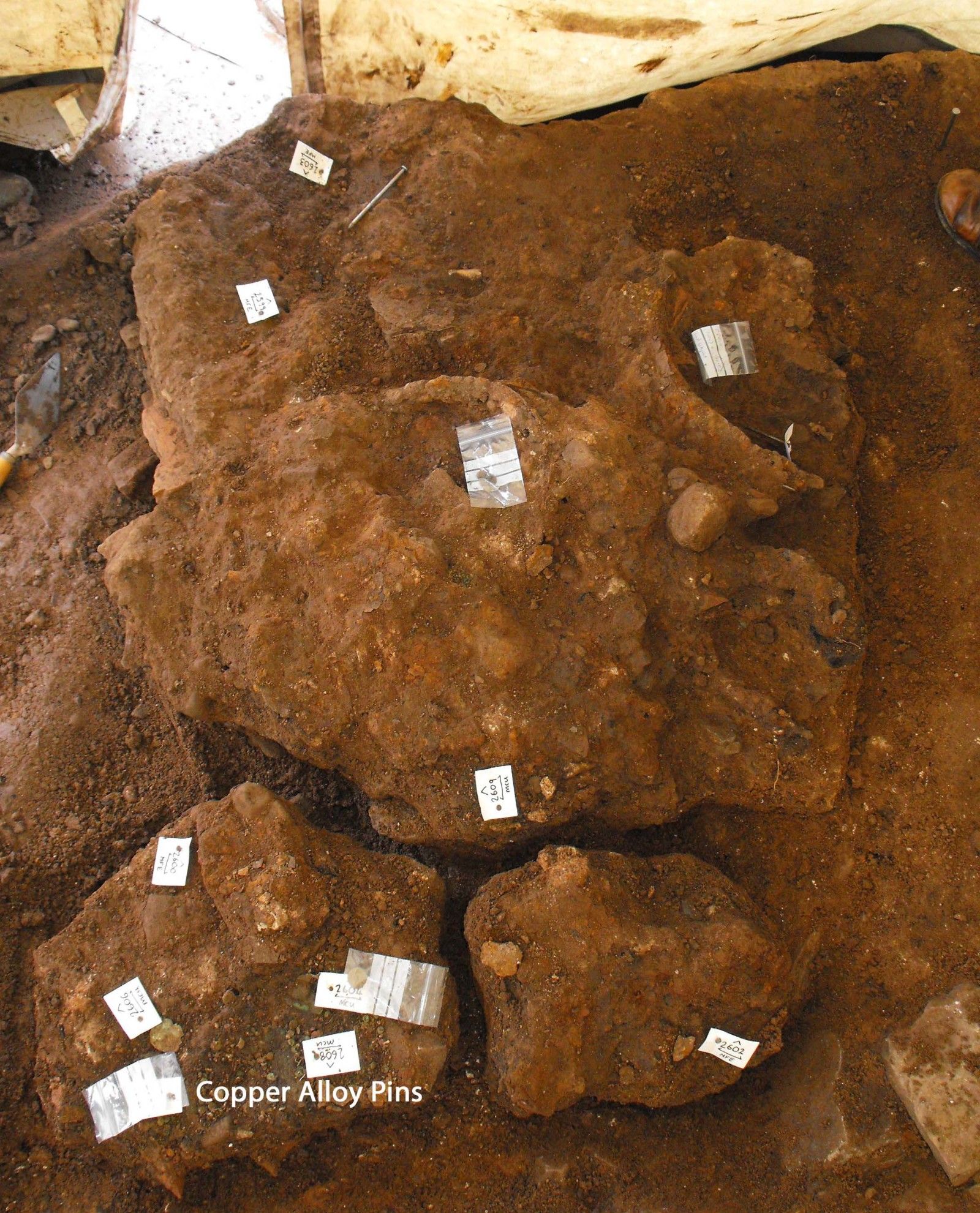
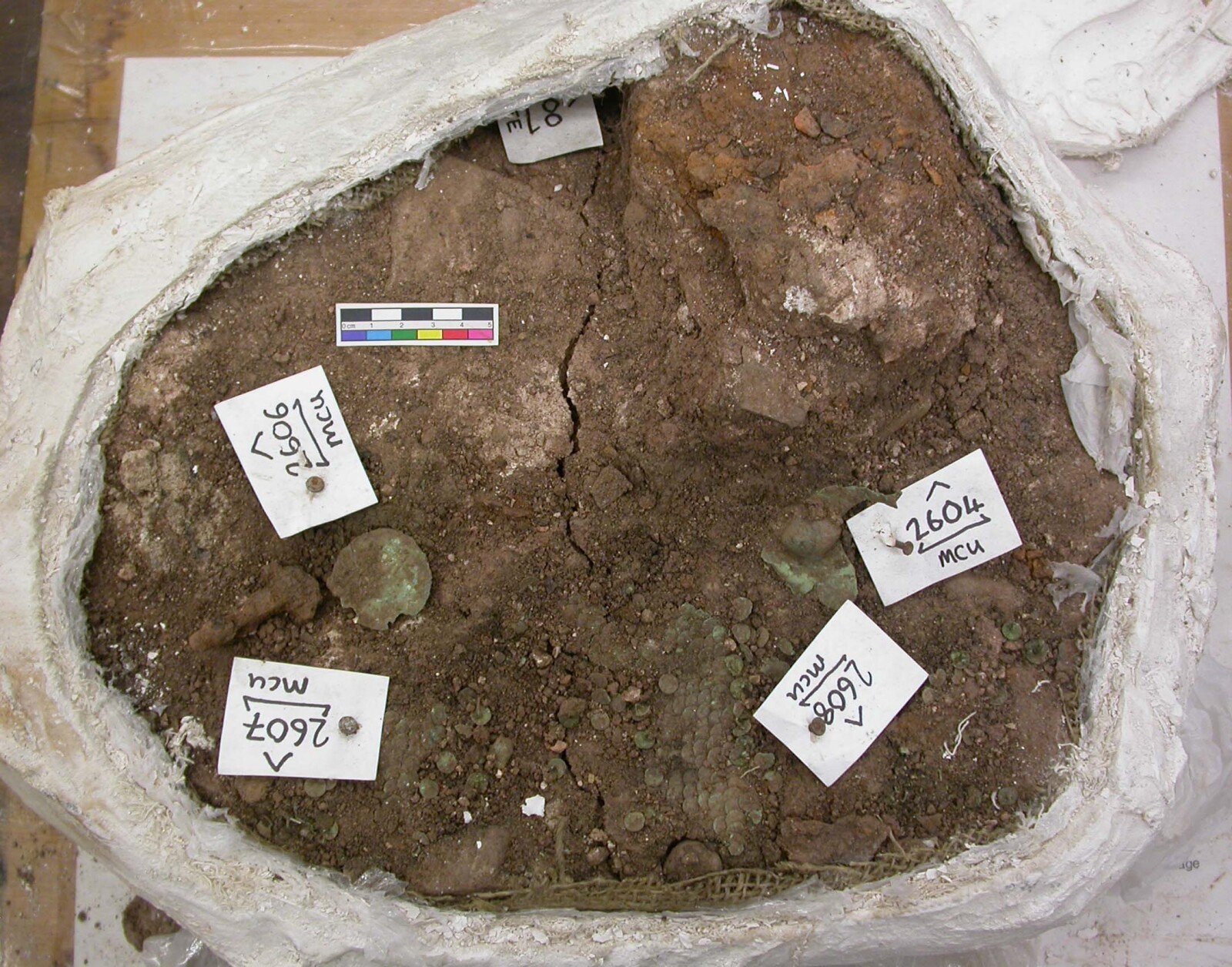
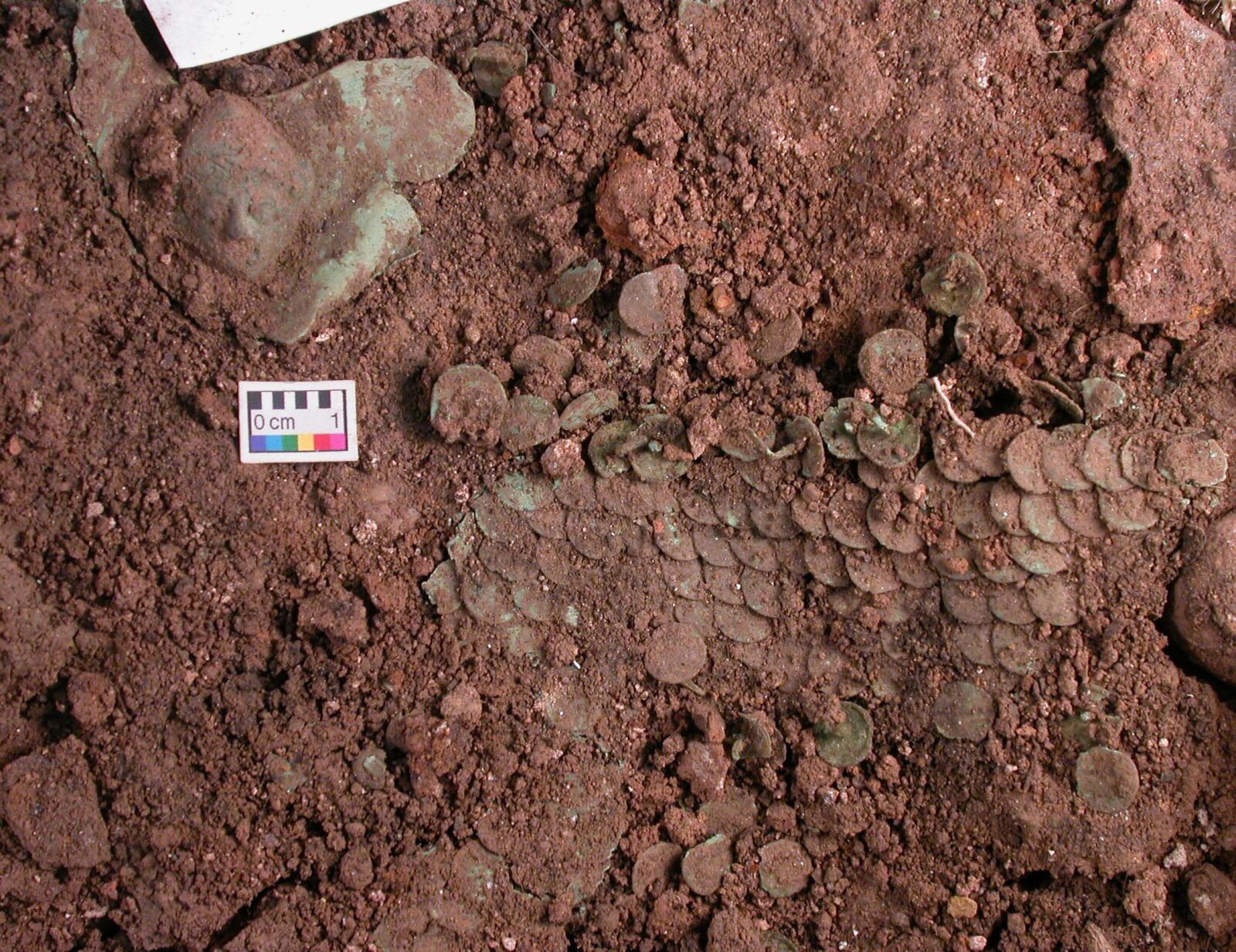
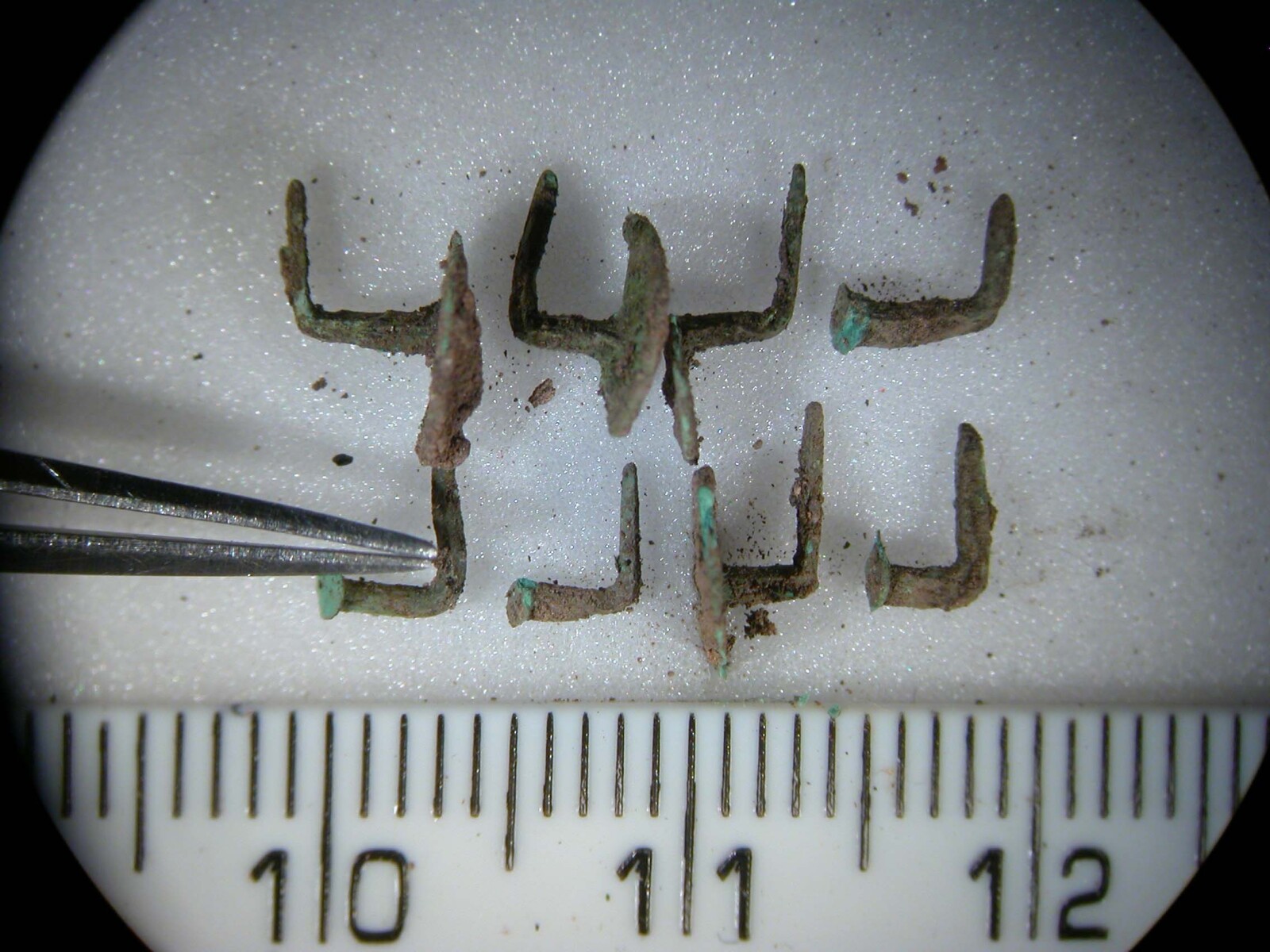
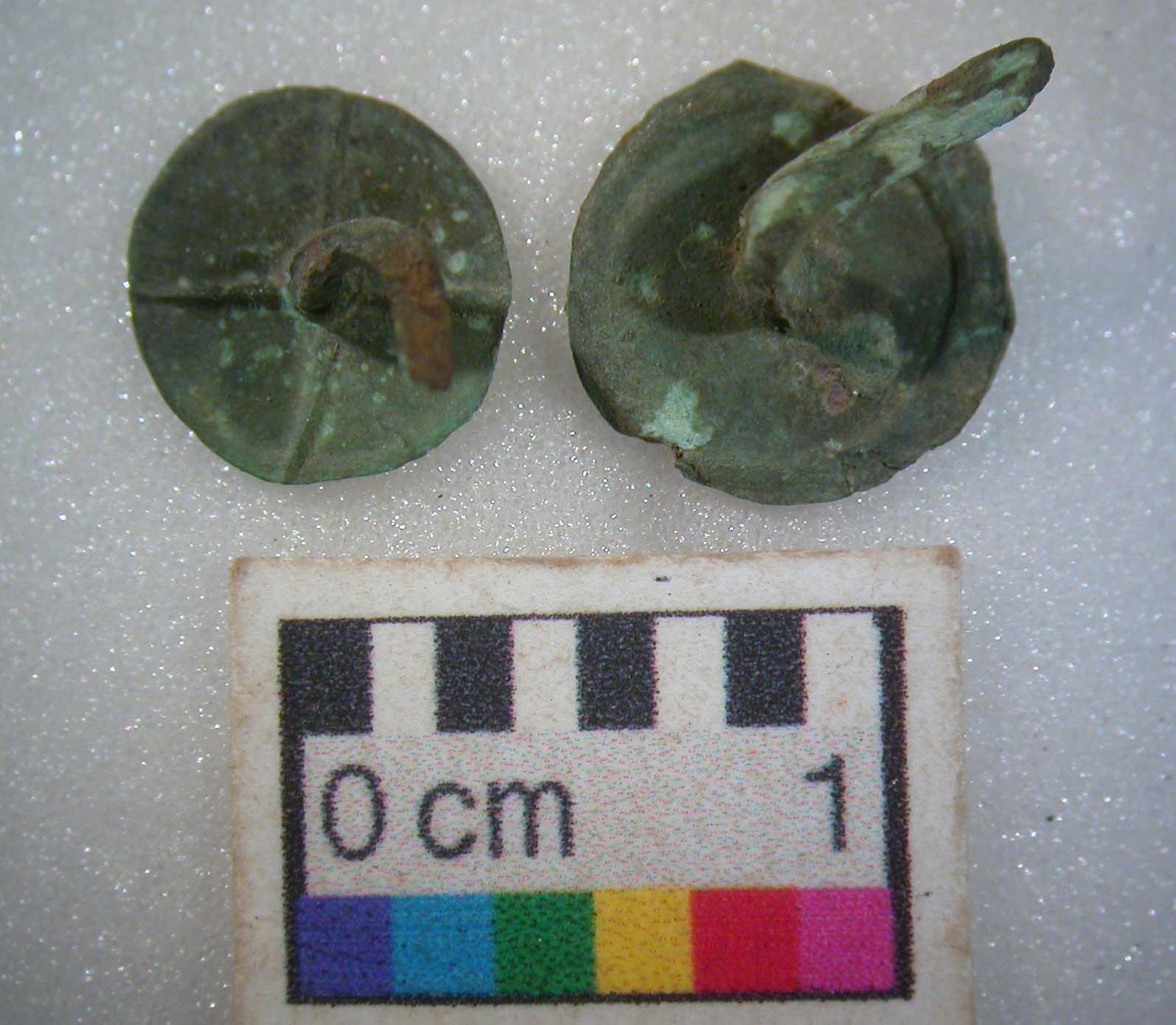
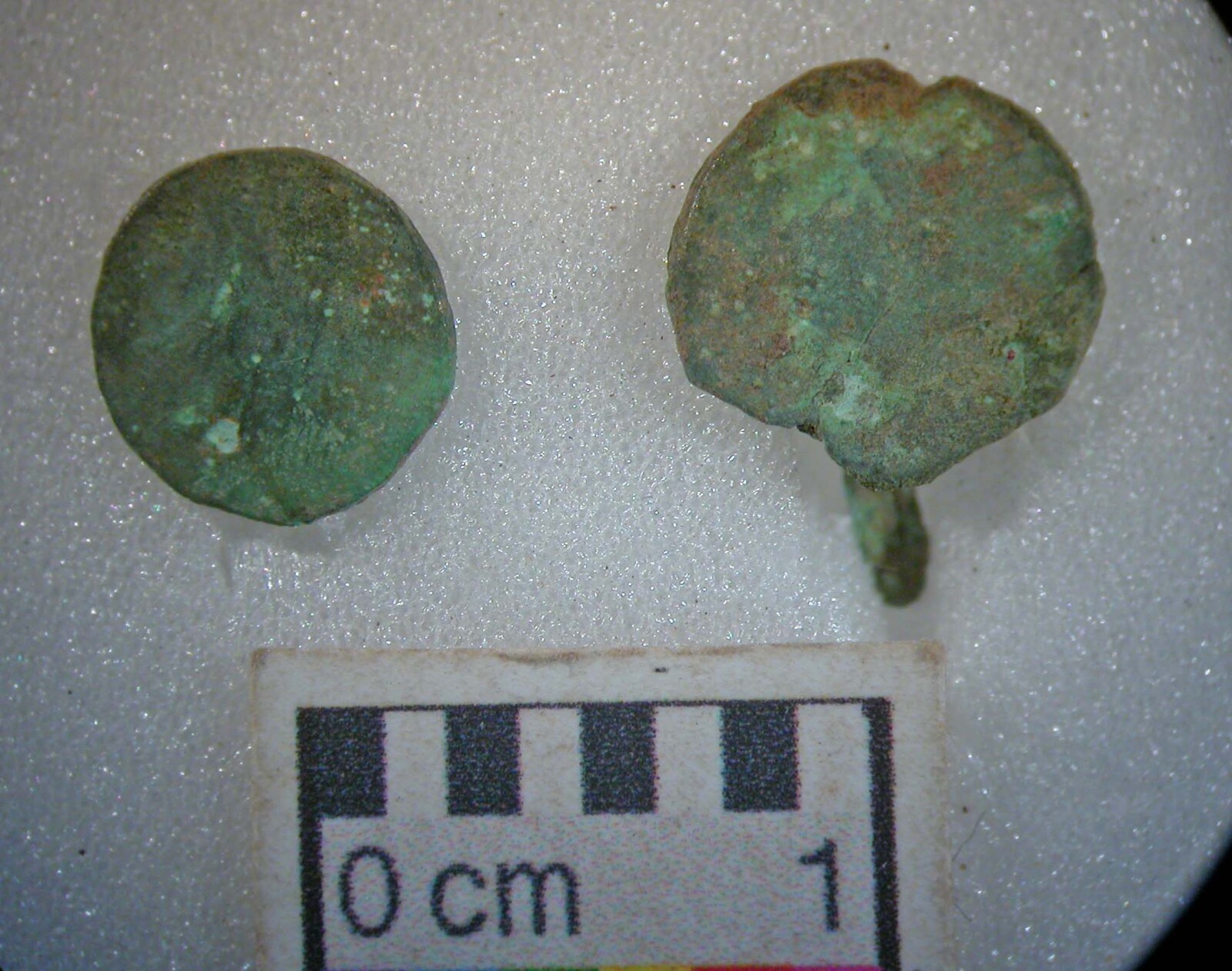
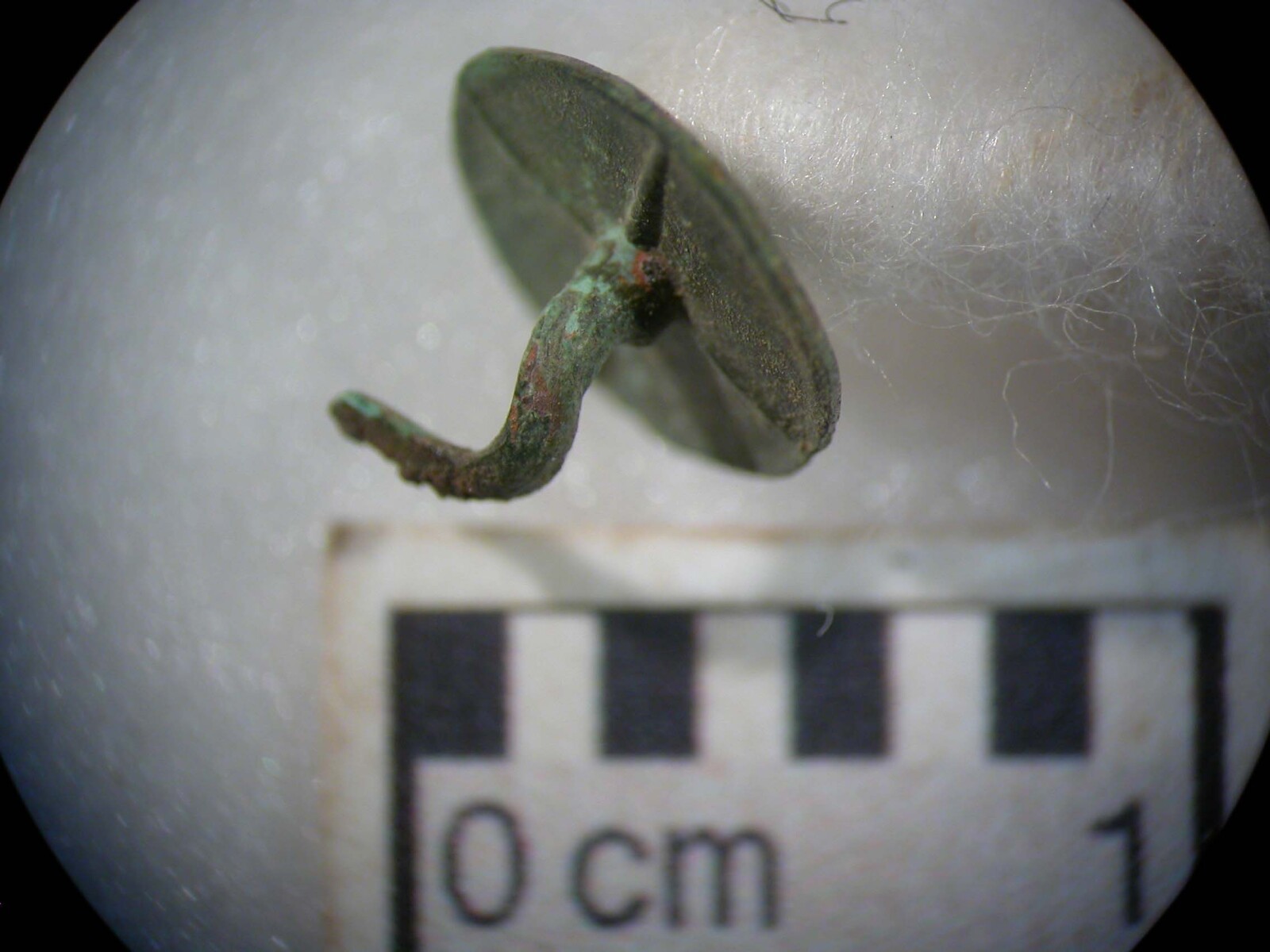
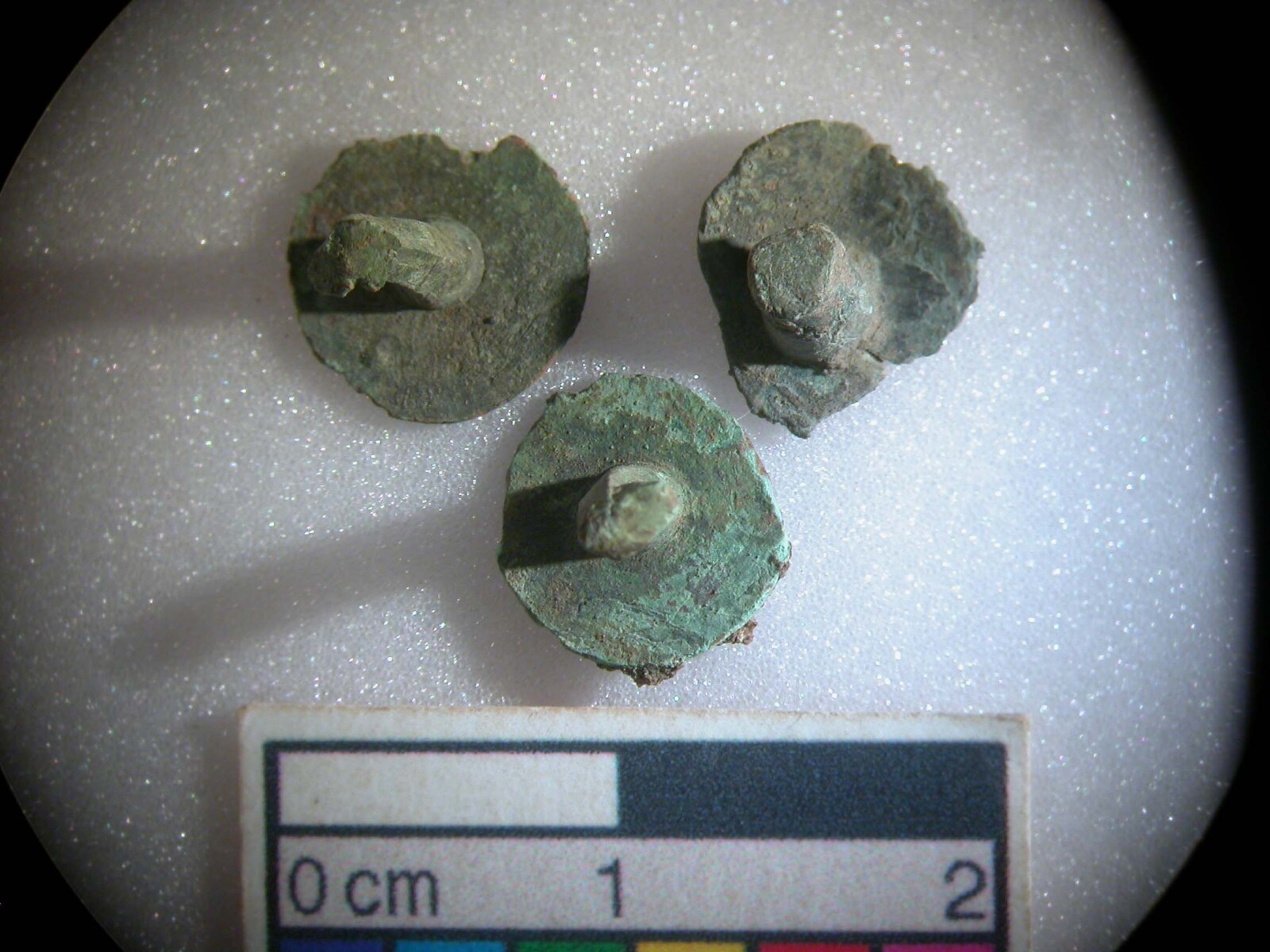
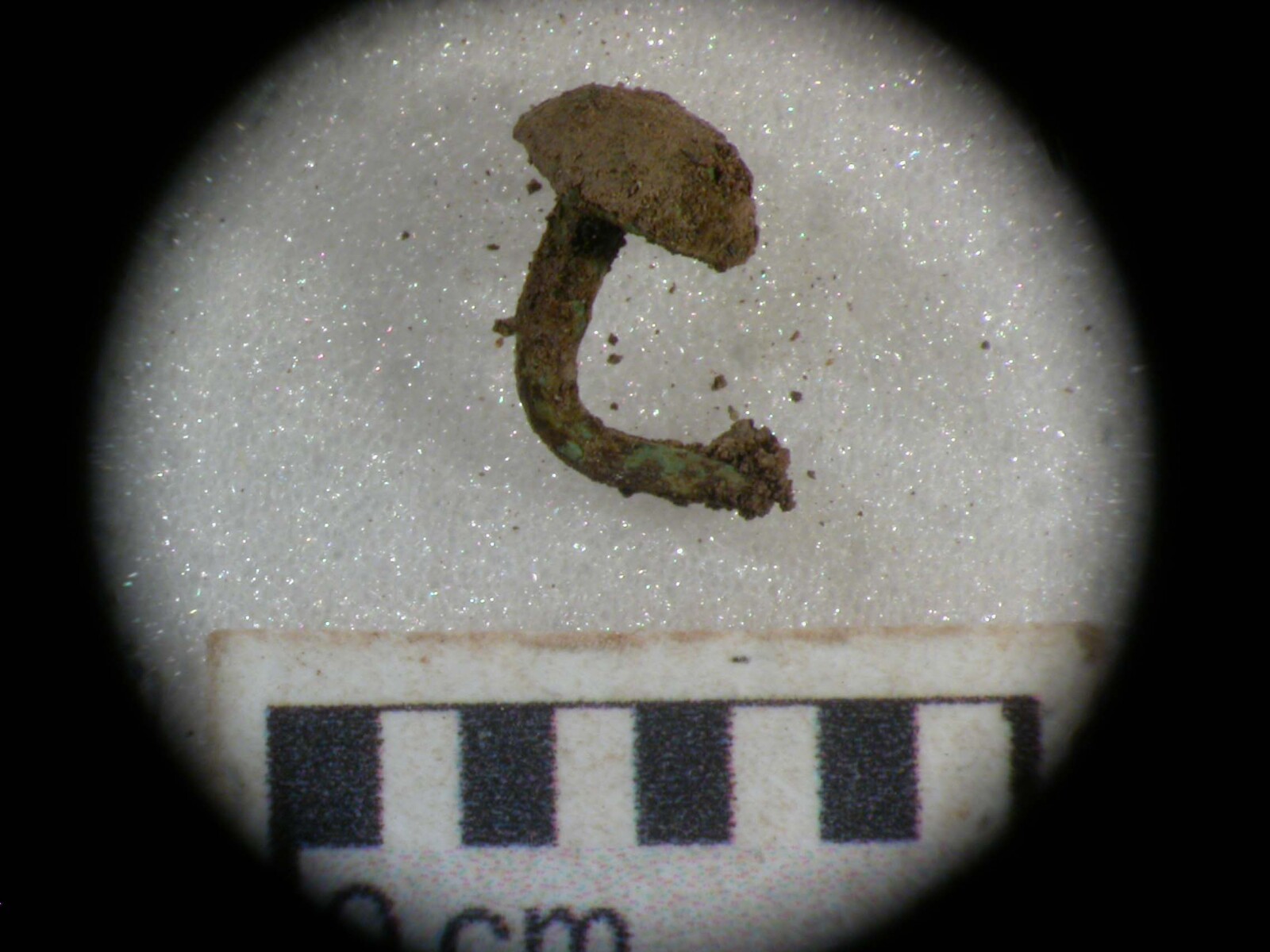
Comments - (8)
He told me from seeing a picture, "As they are only a centimetre across I would have thought they would have been forged {coined whilst hot). They knew how to forge coins with a die so it wouldn
Are there any suggestions about the dating of the armour?
Off to speak t my metal smith tutor!!!
Could it also have been a densely woven textile backing like on the finds from Dura Europos? Any hints?
Good work! :-)